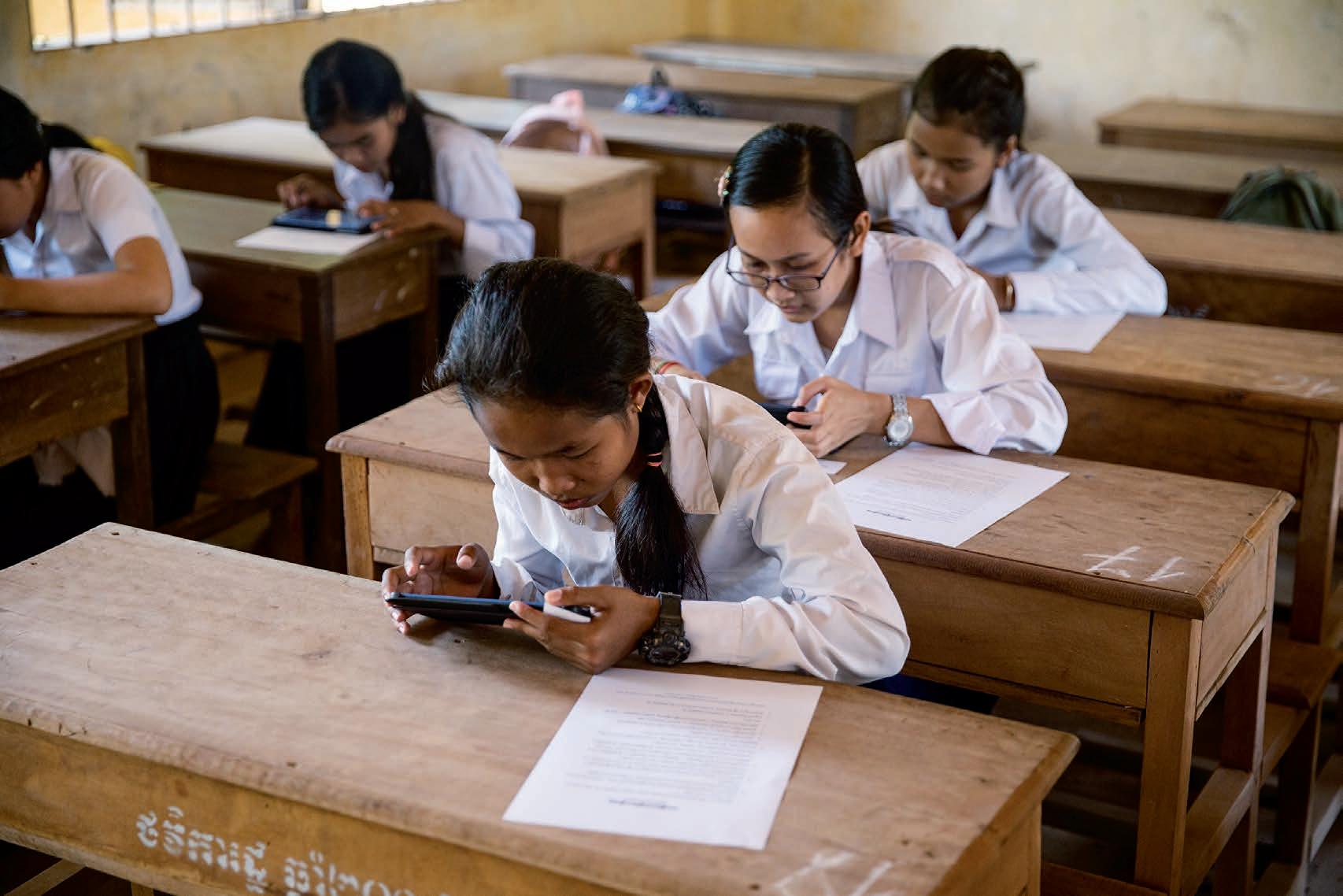
19 minute read
Developing global citizens for a kinder world
40K Foundation empowers teenagers across rural Asia to engage with the world through English.
REGISTERED AUSTRALIAN CHARITY, THE 40K FOUNDATION, HAS IMPROVED THE ENGLISH LANGUAGE LEARNING OUTCOMES AND ACQUISITION OF OVER 16,000 CHILDREN ACROSS RURAL ASIA. IT IS NOW ON A MISSION TO BRING RURAL ASIA TO CLASSROOMS ACROSS AUSTRALIA.
The Covid-19 pandemic and prolonged border closures may have seen Australians retreat from the world for a while, but it remains important for young Australians to develop a global outlook and a better understanding of their region, said 40K’s Head of Foundation, Lisa Colquhoun.
“Global mindedness, and particularly what might be called ‘Asian mindedness’, not only prepares Australian students for the new global economy, but it also helps to combat the inward-looking instincts and self-versusothers mentality that has unfortunately come out of the pandemic,” said Colquhoun.
With the support of the Australian government and the Atlassian Foundation, the Sydney-based organisation has for the past 12 years empowered teenagers across rural Asia to engage with the world through English as the de facto global language. Recognising the growing need to (re) globalise the outlook of young people in its own backyard, the 40K Foundation saw an opportunity to connect Australian students with the students it supports in Asia which led to the creation of The Kindskools’ Project.
The Kindskools’ Project links participating Australian schools with schools across rural Asia (currently focusing on Cambodia), providing a range of opportunities for the partnered schools to interact, share and learn from each other. The program is open to high schools anywhere in Australia.
At the start of the program, participating schools are tasked with creating a presentation about their school, locality and culture to share with their partnered school. Following this, students work on small collaborative projects each quarter, designed to build knowledge of their partner school’s culture and way of life. The schedule of quarterly projects spans multiple learning areas and is developed in consultation with teachers to align with the learning outcomes for each grade.
Joint school assemblies are conducted multiple times each year via videoconferencing. These assemblies provide opportunities for students to interact and show-case their culture through creative performances, as well as present and discuss the projects they have worked on during the quarter.
Throughout the year, teachers and students interact with their partner school
Lisa Colquhoun, Head of Foundation, 40K.
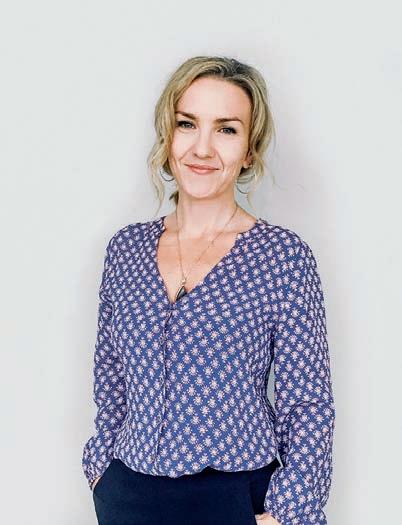
peers through online discussion forums. Gradebased student forums provide opportunities for students to participate in threaded discussions about a range of topics, with the goal of growing and sharing knowledge about each other’s lives and issues that are important to them. Teacheronly forums provide opportunities for teachers from each school to share ideas, expertise and resources.
Other activities include a cultural gift exchange and essay writing competition, through which students reflect on their experience of the program and what they learned from their partner school over the course of the year.
To develop students’ philanthropic mindset and leadership, students are encouraged to actively fundraise for their participation in the program each year. The money raised helps to support the English language education of students in the partner school and other schools across rural Asia. Medallions are awarded annually to the highest fundraiser and most creative fundraiser in each school.
“The purpose of getting students actively involved in fundraising is to emphasise their responsibility as global citizens to make the world a better place, rather than constantly taking from it. It also gives students a sense of purpose and satisfaction knowing they are making a positive difference in the lives of their new international friends,” says Colquhoun.
Research suggests that intercultural school partnerships have a profoundly positive impact not only on students, but also on teachers and the school community at large. By brokering and sustaining effective, mutually-beneficial school partnerships, The Kindskools’ Project ensures that participating schools get the most out of the experience.
For students, benefits include:
• development of intercultural understanding, global citizenship and an appreciation of different perspectives • development of 21st century skills to enable critical thinking, cross-cultural communication and collaboration, empathy and philanthropy, and a positive attitude to diversity • development of international friendships and networks.
For teachers, benefits include:
• opportunities to benchmark practice against other school systems • increased awareness of different education systems and of the challenges facing educators in low-resource settings • development of leadership and cross-cultural communications skills.
For the wider school community, benefits include:
• development of global networks and perspectives, internationalising the outlook of the entire school community • enhanced school image and reputation.
Participation is perhaps most transformative for the students in low resource, rural Asian contexts who would otherwise remain on the periphery of globalisation. For these students, the pace of global change, accelerated even more so by the Covid-19 pandemic, has increased the vulnerability of their families already precarious livelihoods and their own inherently precarious futures.
“Their lives will be completely transformed by this program. For many, it will be the first time they have been able to practise English with a native speaker, the first time they’ve encountered a foreigner and a foreign culture. What that can do for a young person whose world had previously been limited to within the boundaries of their rural or remote village cannot be underestimated,” says Colquhoun.
The 40K Foundation is currently accepting expressions of interest from Australian high schools for a Term 3 commencement. EM
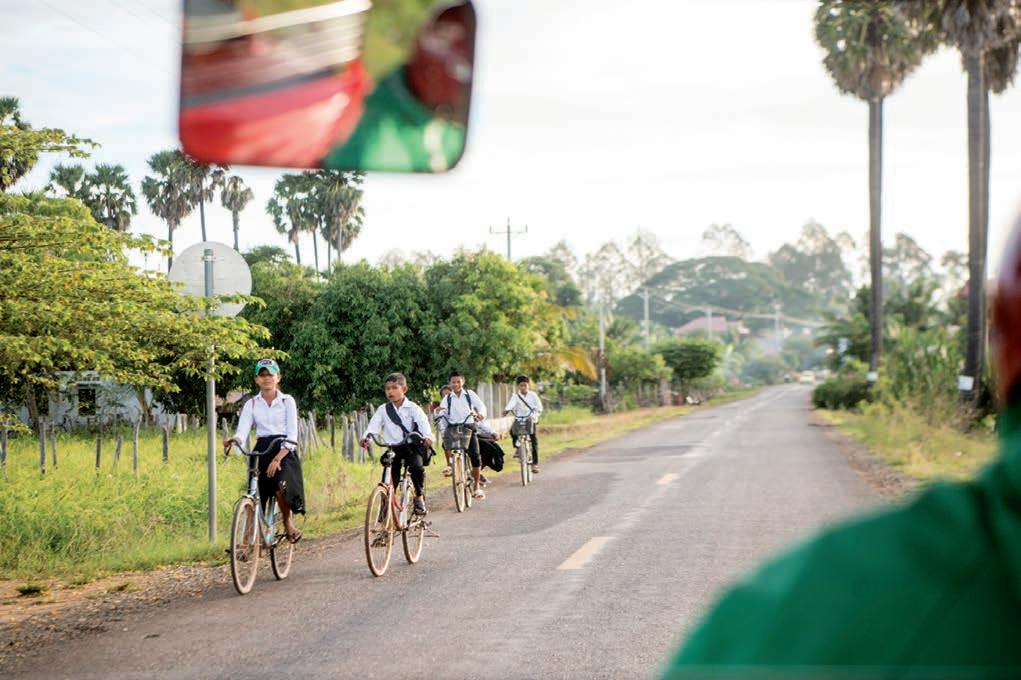
To learn more, contact Lisa Colquhoun, Head of Foundation, at lisa@40k.com.au or visit www.40kfoundation.org/kindskools
Intercultural school partnerships have a positive impact on students, teachers and the school community at large.

Invisible language learners
MANY FIRST NATIONS CHILDREN DO NOT SPEAK STANDARD AUSTRALIAN ENGLISH AS THEIR FIRST LANGUAGE. EDUCATION SYSTEMS AND EDUCATORS NEED TO RECOGNISE AND RESPOND TO STUDENTS’ LANGUAGE BACKGROUNDS.
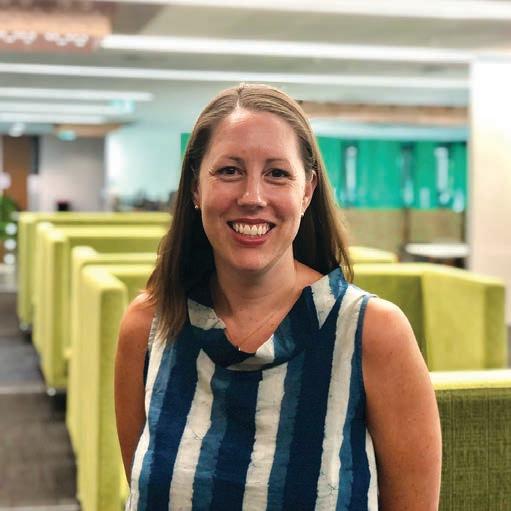
Dr Carly Steele is a Lecturer and Early Career Researcher in the School of Education at Curtin University, Perth. She completed her PhD at the University of Melbourne in 2021 which explored the role of language awareness and the use of constrastive analysis for teaching Standard Australian English as an additional language to Aboriginal and Torres Strait Islander students in primary school. Of the original 250 plus languages and over 750 dialects spoken by First Nations peoples before 1788, only 12 are being learned by children today (Dixon, 2019). Instead, widely spoken contact languages – creoles and dialects – have emerged (NILS 3, 2020). However, these languages are often not recognised as the full languages they are by some educators and society generally.
WHAT ARE CONTACT LANGUAGES?
Contact languages form when two or more languages come together in a context where communication is essential. In Australia this occurred between traditional Aboriginal and Torres Strait Islander languages and English after 1788. A variety of contact languages developed which are both similar and different from each other: some more closely related to English, others with more features of the traditional languages. Some examples are Aboriginal English (Rodriguez Louro & Collard, 2020) and Kriol (Dickson, 2016). Many are not officially named. These factors contribute to their lack of recognition in Australian society, including school systems.
INVISIBLE LANGUAGE LEARNERS
Little is known about these languages, but children come to school speaking these languages as their first language. Often, the children’s languages are “invisible” (Sellwood & Angelo, 2013) to educators and not recognised as different languages. Consequently, the students may not be treated as second language learners of Standard Australian English (SAE) and their language learning needs not considered.
To improve educational outcomes for Aboriginal and Torres Strait Islander children who do not speak SAE as their first language, their language backgrounds must be recognised and valued.
OUR STUDY
In our research (Steele & Wigglesworth, 2021), we sought to quantitatively show some of the language differences to help make the SAE language learning needs of many First Nations children “visible” to educators.
First, we compared the short-term memory capacities of Aboriginal and Torres Strait Islander students who speak Indigenous contact languages with native monolingual SAE speakers. The short-term memory capacities of the two groups were the same showing that both groups are equally able to process language.
Next, students orally produced a range of simple sentences in SAE to gauge their proficiency. The SAE speaking ability of the two groups differed significantly. We also examined students’ knowledge of four SAE grammatical features: • the prepositions at-in-on • plural ‘s’ on nouns e.g. cats • simple present tense with 3rd person singular ‘s’ e.g. she runs • simple irregular past tense e.g. they ate.
The two groups differed significantly in all aspects but the prepositions at-in-on.
This finding highlights the close relationship that can exist between Indigenous contact languages and SAE. It demonstrates how speakers of Indigenous contact languages may be proficient in some aspects of SAE, but not others. These similarities can mask students’ status as language learners.
WHY DOES IT MATTER?
Our findings showed the SAE speaking ability of the Aboriginal and Torres Strait Islander students improved over the primary school years but did not reach the levels of their monolingual SAE speaking peers.
As children progress through school, the SAE language and literacy demands increase at such a rate that the language gains made are unlikely to be identified in many classroom-based or standardised assessments (e.g. NAPLAN). Consequently, students’ achievement may not be visible and go unrecognised in the classroom.
The impact can be seen in the deficit positioning of Aboriginal and Torres Strait Islander learners in educational and national public discourse (Patrick & Moodie, 2016). The educational and social implications are considerable and the outcomes for First Nations children who speak contact languages a national disgrace.

WHAT CAN BE DONE?
To meet the SAE learning needs of students who speak Indigenous contact languages, their language backgrounds must be recognised and valued in the classroom. Students’ first language/s play an important role in learning (Oliver et al., 2021). Contact languages need to be treated with respect and understanding, and not viewed as incorrect forms of SAE.
All teachers need to understand how language is learned and how it works to effectively teach SAE alongside curriculum content. Language skills are the cornerstone of literacy and educational development. Teachers should explicitly teach of SAE and provide students with the opportunity to practice their language skills (Angelo & Hudson, 2021).
Targeted training needs to be delivered in Initial Teacher Education (ITE) degrees and in professional development for teachers already teaching. In the current climate of heavy responsibilities on time-poor teachers, sufficient funding and time must be given for teachers to gain the skills required. EM
References Angelo, D. & Hudson, C. (2021). From the periphery to the centre: Securing the place at the heart of the TESOL field for First Nations learners of English as an Additional Language/ Dialect. TESOL in Context, 29(1): 5–35. https://doi.org/10.21153/ tesol2020vol29no1art1421 Dr Carly Steele is calling for education systems to recognise and response to students’ language backgrounds.
Dickson, G. (26th April 2016). Explainer: the largest language spoken exclusively in Australia – Kriol. The Conversation. https:// theconversation.com/explainer-the-largest-language-spokenexclusively-in-australia-kriol-56286 Dixon, R. M. 2019. Australia’s Original Languages: An Introduction. NSW: Allen and Unwin. National Indigenous Language Survey (NILS) 3. (2020). National Indigenous Languages Report. Canberra: Department of Infrastructure, Transport, Regional Development and Communications. The Australian Government. https://apo.org.au/ sites/default/files/resource-files/2020-08/apo-nid307493.pdf Oliver, R., Wigglesworth, G., Angelo, D., & Steele, C. (2021). Translating translanguaging into our classrooms: Possibilities and challenges. Language Teaching Research, 25(1): 134–150. https:// doi.org/10.1177/1362168820938822 Patrick, R. & Moodie, N. (2016). Indigenous Education Policy Discourses in Australia: Rethinking the “Problem”. In T. Barkatsas & A. Bertram (Eds.), Global Learning in the 21st Century, 165–184. Sense Publishers. https://link.springer.com/ chapter/10.1007/978-94-6300-761-0_10 Rodriguez Louro, C. & Collard, G. D. (16th June 2020). 10 ways Aboriginal Australians made English their own. The Conversation. https://theconversation.com/10-ways-aboriginal-australiansmade-english-their-own-128219 Sellwood, J., & Angelo, D. (2013). “Everywhere and Nowhere: Invisibility of Aboriginal and Torres Strait Islander Contact Languages in Education and Indigenous Language Contexts.” Australian Review of Applied Linguistics, 34(3): 250–266. https:// doi.org/10.1075/aral.36.3.02sel Steele, C. & Wigglesworth, G. (2021). Recognising the SAE language learning needs of Indigenous primary school students who speak contact languages, Language and Education, https://doi.org/10.1080/09500782.2021.2020811 *This article is an abridged version of the article which appeared in The Conversation (https://theconversation.com/invisiblelanguage-learners-what-educators-need-to-know-about-manyfirst-nations-children-175917) and is based on a recently published article by Steele & Wigglesworth, 2021 (https://www.tandfonline. com/doi/full/10.1080/09500782.2021.2020811?src=)
Teaching Australia’s painful shared history
DR TRACY WOODROFFE DISCUSSES HOW THE TEACHING OF AUSTRALIA’S SHARED HISTORY IN SCHOOLS REQUIRES THE TEACHING OF ANALYSIS AND THE INCLUSION AND UNDERSTANDING OF INDIGENOUS PERSPECTIVES.
There is no denying that Australia’s history includes tragic incidents that are very uncomfortable for some people to acknowledge let alone speak about or teach. These incidents are part of Australia’s shared history beginning with colonisation.
Feelings of teachers new to the classroom are important to understand when discussing the teaching of Australian history lessons. ‘History is recorded by the victor’ is a common phrase and explains the attributions given to the many milestones throughout the world’s history. Whether consciously or not, we form polarized ideas about the heroes being the victors in their triumph over the enemy. The recording of history is crafted in a way to present the dominance of the victor and raises the questions about fact and truth.
Colonisation has created this scenario in Australia. The language used to teach
Dr Woodroffe says Australia’s history taught in schools requires a more rounded understanding of what has occurred in Australia’s past.
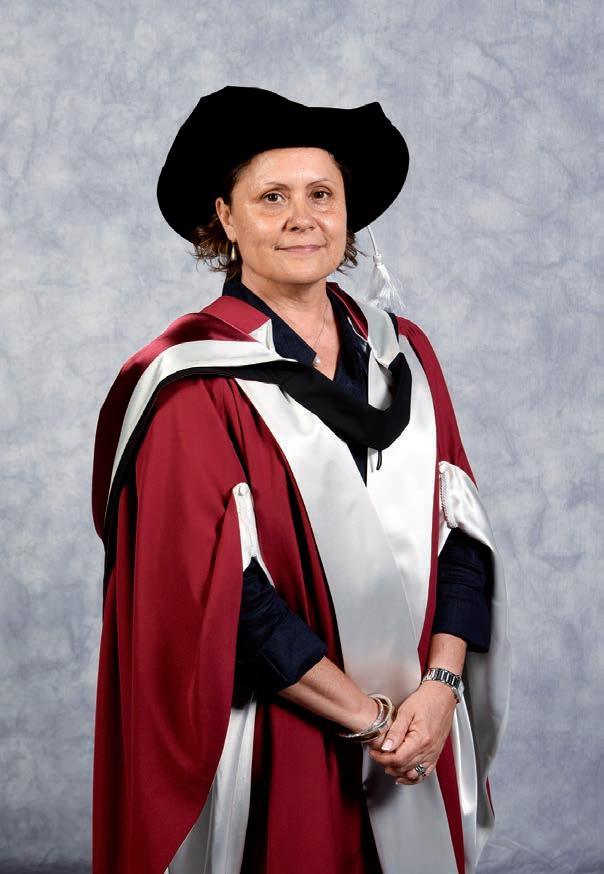
Dr Tracy Woodroffe is a Warumungu Luritja woman with years of experience in the field of education - early childhood, primary, secondary, and tertiary. The majority of that time has been spent in the classroom teaching and in associated leadership roles. She is a lecturer at Charles Darwin University who coordinates, develops and delivers teacher education units about teaching Indigenous learners and the importance of Indigenous knowledge in education.

Australia’s shared history using words such as British discovery and settlement, and then terms such as natives and uncivilized describing Aboriginal people, are only teaching students from one perspective. History requires, and students deserve, a more rigorous investigation than that. The teaching of Australia’s shared history requires the teaching of analysis and the inclusion and understanding of Indigenous perspectives. It requires a more rounded understanding of what has occurred in Australia’s past, to move forward as a nation and to teach for reconciliation. So how do we best teach for reconciliation in a way that represents different perspectives, that includes uncomfortable and painful incidents and concepts, and addresses the contention between fact and truth?
Australian history has included massacres, dispossession, segregation, racism, exclusion, and abuse. How do we make sure that all Australian citizens know this as part of our shared history and recognise these painful aspects as tools for reconciliation? The process should be a part of schooling, but past curriculum has been limited to approved priority topics which have been lacking in Indigenous perspectives and not inclusive of the inhumane treatment of Aboriginal people. The teaching of limited facts from only a nonAboriginal perspective does not allow for the truth of Aboriginal experience, and results in a partial knowledge of Australian history.
There are several resources that teachers can utilise to make sure that their students know the comprehensive history of Australia. Teachers can use these resources to ensure a more realistic understanding of Aboriginal people and culture, creating opportunities for reconciliation. The following statement in the Sydney Morning Herald strikes at the heart of the matter. “Most students will leave history lessons knowing about the Stolen Generations and campaigns for Indigenous rights, such as the freedom rides and 1967 referendum. Their understanding of frontier wars, forced labour or blackbirding, however, might be less robust” (Chrysanthos, 2020, para. 1). (https://www.smh. com.au/national/nsw/how-indigenous-history-istaught-in-nsw-schools-20200616-p5534w.html).
The resulting difficulty is in teachers finding
Dr Woodroffe has outlined resources teachers can use to ensure a more realistic understanding of Aboriginal people and culture, creating opportunities for reconciliation.
out how to bridge this gap in knowledge and be able to move forward.
Danielle Hradsky outlined outcomes of several curriculum reviews and political toing and froing, in her July 2021 article ‘Invasion of Reconciliation: What matters in the Australian curriculum?’ (available at https://lens.monash. edu/@education/2021/07/09/1383496/invasionor-reconciliation-what-matters-in-the-australiancurriculum).
The article demonstrated that the portrayal of Australia’s shared history has been an issue debated by many for a long time with relatively limited progress towards a truly comprehensive version with uncomfortable concepts inclusive of Indigenous perspectives. This needs to be remedied.
Historical Acceptance is one of the five dimensions of reconciliation recommended by Reconciliation Australia and can be accessed on their website at https://www.reconciliation. org.au/what-is-reconciliation/ . On the website, Historical Acceptance is described as: All Australians understand and accept the wrongs of the past and their impact on Aboriginal and Torres Strait Islander peoples. Australia makes amends for past policies and practices ensures these wrongs are never repeated’ and requires ‘widespread acceptance of our nation’s history and agreement that the wrongs of the past will never be repeated— there is truth, justice, healing and historical acceptance. However, none of this will be achieved though unless people act. The classroom is the perfect place to lay the foundations.
In conclusion, teachers have a massive impact on their students and in the shaping of society in general. This responsibility includes truth telling about our shared history with the purpose of healing and moving forward together. EM
National Reconciliation Week is held every year between 27 May to 3 June.
Be Brave. Make Change – a call to action for school leaders
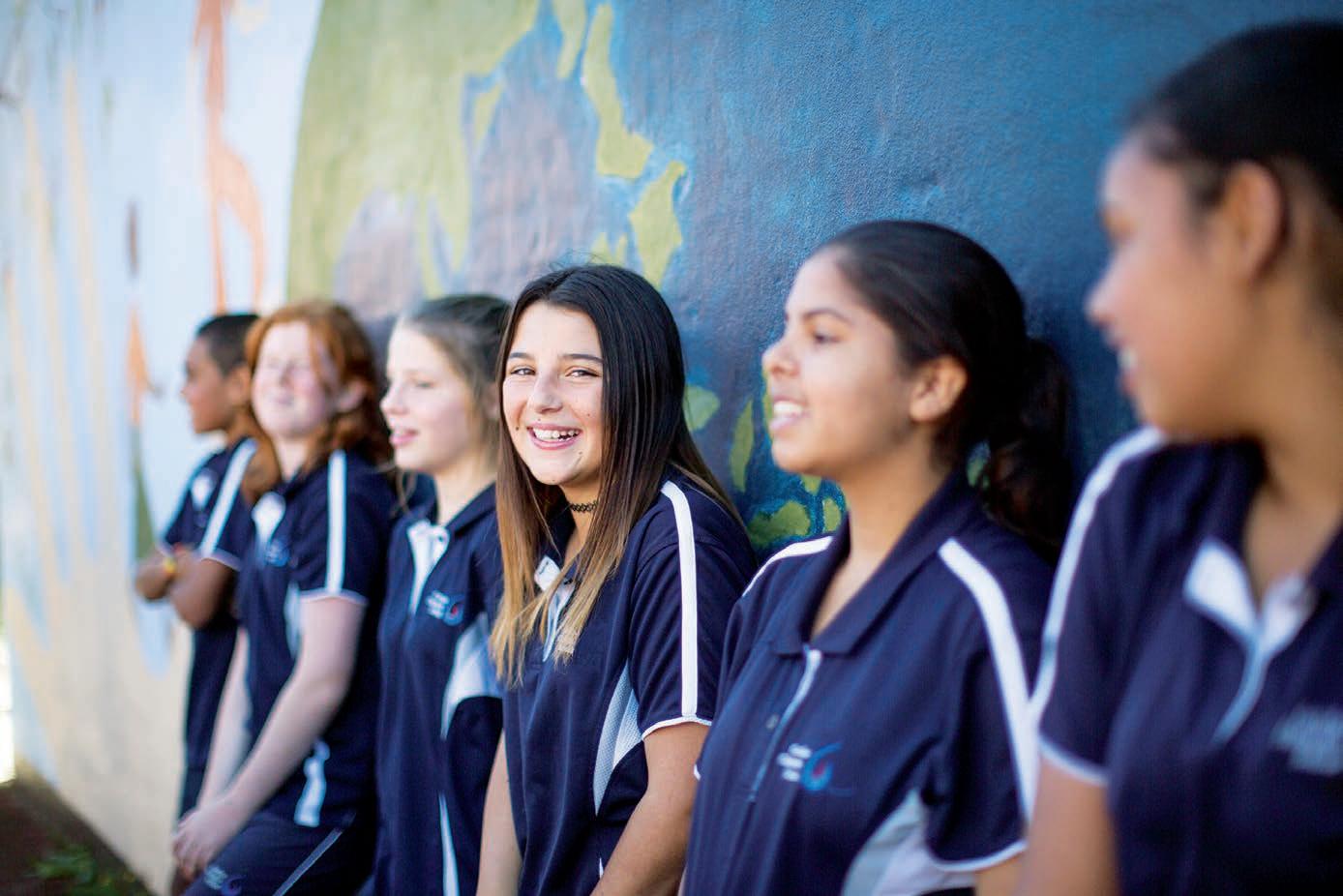
NATIONAL RECONCILIATION WEEK IS HELD ANNUALLY BETWEEN 27 MAY TO 3 JUNE. IT’S A TIME FOR ALL AUSTRALIANS TO LEARN ABOUT OUR SHARED HISTORIES, CULTURES, AND ACHIEVEMENTS, AND TO EXPLORE HOW EACH OF US CAN CONTRIBUTE TO ACHIEVING RECONCILIATION IN AUSTRALIA.
The National Reconciliation Week 2022 theme, Be Brave. Make Change. is a challenge to everyone to ‘Be Brave’ and tackle the unfinished business of reconciliation so society can ‘Make Change’ for the benefit of all Australians.
For school leaders, it is a call to make reconciliation a priority in their learning communities, not just during NRW, but every week of the year.
LEADING RECONCILIATION IN YOUR SCHOOL
The education system, and school leaders in particular play a vital role in giving young Australians the skills and insight to make an informed contribution to the reconciliation process; and to encourage and support teachers and educators to engage in their own learning, ‘un-learning’ and ‘re-learning’ to build a better future together.
In fact, Reconciliation Australia’s landmark 2021 State of Reconciliation in Australia Report consistently asserts education as a driving force in the reconciliation movement. Historically, the formal education system in Australia has served as a tool of colonisation.
‘’Aboriginal and Torres Strait Islander peoples, pedagogies and perspectives have been systematically excluded from mainstream education institutions, policies and frameworks,” says Reconciliation Australia’s Chief Executive Officer Ms Karen Mundine.
“As a result, generations of Australians have grown up with an inadequate understanding of Aboriginal and Torres Strait Islander cultures, and very limited awareness of the true histories of Australia. Education institutions have contributed to a lack of historical acceptance, deepening inequalities and inequities, and disrupting pathways towards reconciliation.”
There have been some recent and important shifts in education regarding the inclusion and
understanding of First Nations cultures and of reconciliation in Australian schools. In 2008, the Melbourne Declaration on Educational Goals for Young Australians articulated the need for students to understand and acknowledge the value of Aboriginal and Torres Strait Islander cultures and to learn how to contribute to reconciliation. This was agreed to by all Australian Education Ministers.
The Declaration led to the establishment of an Australian Curriculum which included Aboriginal and Torres Strait Islander histories and cultures as one of three cross-curriculum priorities. It also resulted in the inclusion of reconciliation in the Australian Professional Standards for Teachers and Principals.
In 2020, Australian Governments recommitted to the importance of reconciliation in education as part of the Mparntwe Education Declaration.
They specifically committed to working in collaboration with the education community to support all young Australians to become “active and informed members of the community who possess the knowledge, skills and understanding to contribute to, and benefit from, reconciliation between Aboriginal and Torres Strait Islander peoples and non-Indigenous Australians.”
These kinds of commitments are backed by the findings in Reconciliation Australia’s 2021 State of Reconciliation Report which show that for reconciliation to be effective, in education or otherwise, it must involve truth-telling, and actively

NRW for school leaders is a call to make reconciliation a priority in their learning communities.
address issues of inequality, systemic racism and instances where the rights of Aboriginal and Torres Strait Islander peoples are ignored, denied or reduced.
Despite growing support, national commitments, and an increasing expectation within the profession, many school leaders and teachers are still uncertain and lack confidence about what they can do in practice to advance reconciliation.
Indeed, the gaps and silences of the colonial education system have contributed to this uncertainty.
NARRAGUNNAWALI: RECONCILIATION IN EDUCATION
Reconciliation Australia’s Narragunnawali program is designed to foster knowledge and pride in Aboriginal and Torres Strait Islander histories, cultures and contributions in Australian education settings.
The Narragunnawali platform helps schools create a Reconciliation Action Plan.
The Narragunnawali program is available to all government, Catholic and Independent schools and early learning services across Australia. It has curriculum resources and professional learning materials for teachers, created by teachers, along with webinars, a regular newsletter, and an awards program with prizes to further support schools and early learning services to be brave and make change.
Narragunnawali is an entry point to launch a whole-school approach to reconciliation. It contains the resources you need to bring reconciliation into your schools in a safe, structured and respectful way.
Narragunnawali is a Ngunnawal word meaning ‘alive’, ‘wellbeing’, ‘coming together’ and ‘peace’. The word narragunnawali is used with the permission of the United Ngunnawal Elders Council.

RECONCILIATION ACTION PLANS
The Narragunnawali platform will also step through the process of creating a Reconciliation Action Plan (RAP) for schools. A Reconciliation Action Plan (RAP) is a formal statement of commitment to reconciliation and can be developed by any school regardless of where it is on its reconciliation journey.
You may be thinking, you are just one school or one individual, but properly equipped, you are more influential than you know.
Finally, Mundine suggests think about what you can do within your school to be Brave. Make Change. “It could be fundamental actions such as acknowledging and understanding whose Country your school is on; to challenging colonial perspectives on history, supporting school curriculum changes, or committing to a RAP in your school or early learning service,” she says. EM
Learn more: reconciliation.org.au/narragunnawali










